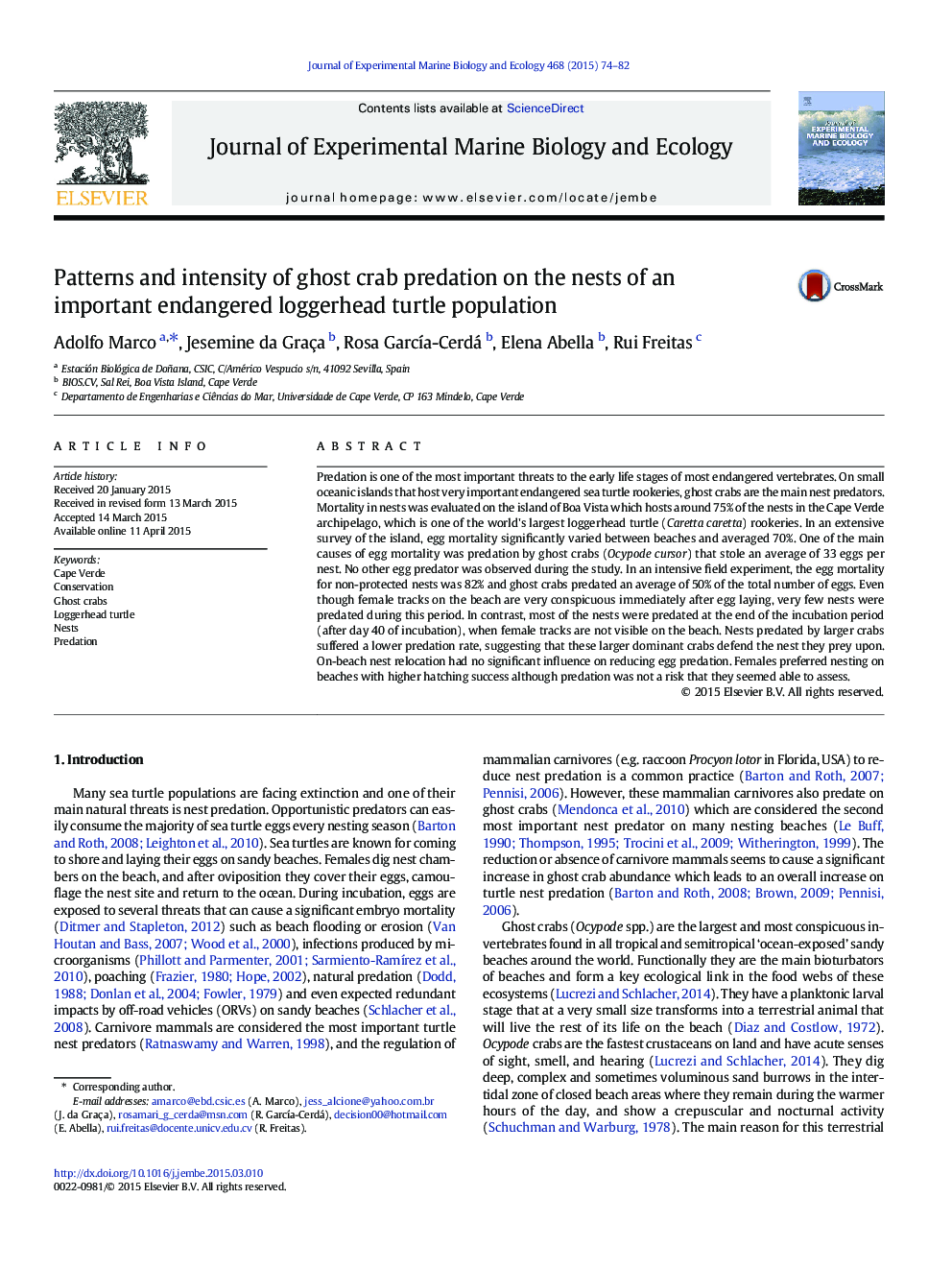| کد مقاله | کد نشریه | سال انتشار | مقاله انگلیسی | نسخه تمام متن |
|---|---|---|---|---|
| 4395402 | 1618407 | 2015 | 9 صفحه PDF | دانلود رایگان |
• Ghost crabs kill half of the eggs of an important and endangered loggerhead rookery.
• Most of predation occurs at the end of the incubation period.
• Predation rate is lower when predators are of larger size.
• Females do not avoid nesting on beaches with higher predation risk.
• In-situ protection and transfer to a hatchery are the best tools to reduce mortality.
Predation is one of the most important threats to the early life stages of most endangered vertebrates. On small oceanic islands that host very important endangered sea turtle rookeries, ghost crabs are the main nest predators. Mortality in nests was evaluated on the island of Boa Vista which hosts around 75% of the nests in the Cape Verde archipelago, which is one of the world's largest loggerhead turtle (Caretta caretta) rookeries. In an extensive survey of the island, egg mortality significantly varied between beaches and averaged 70%. One of the main causes of egg mortality was predation by ghost crabs (Ocypode cursor) that stole an average of 33 eggs per nest. No other egg predator was observed during the study. In an intensive field experiment, the egg mortality for non-protected nests was 82% and ghost crabs predated an average of 50% of the total number of eggs. Even though female tracks on the beach are very conspicuous immediately after egg laying, very few nests were predated during this period. In contrast, most of the nests were predated at the end of the incubation period (after day 40 of incubation), when female tracks are not visible on the beach. Nests predated by larger crabs suffered a lower predation rate, suggesting that these larger dominant crabs defend the nest they prey upon. On-beach nest relocation had no significant influence on reducing egg predation. Females preferred nesting on beaches with higher hatching success although predation was not a risk that they seemed able to assess.
Journal: Journal of Experimental Marine Biology and Ecology - Volume 468, July 2015, Pages 74–82
